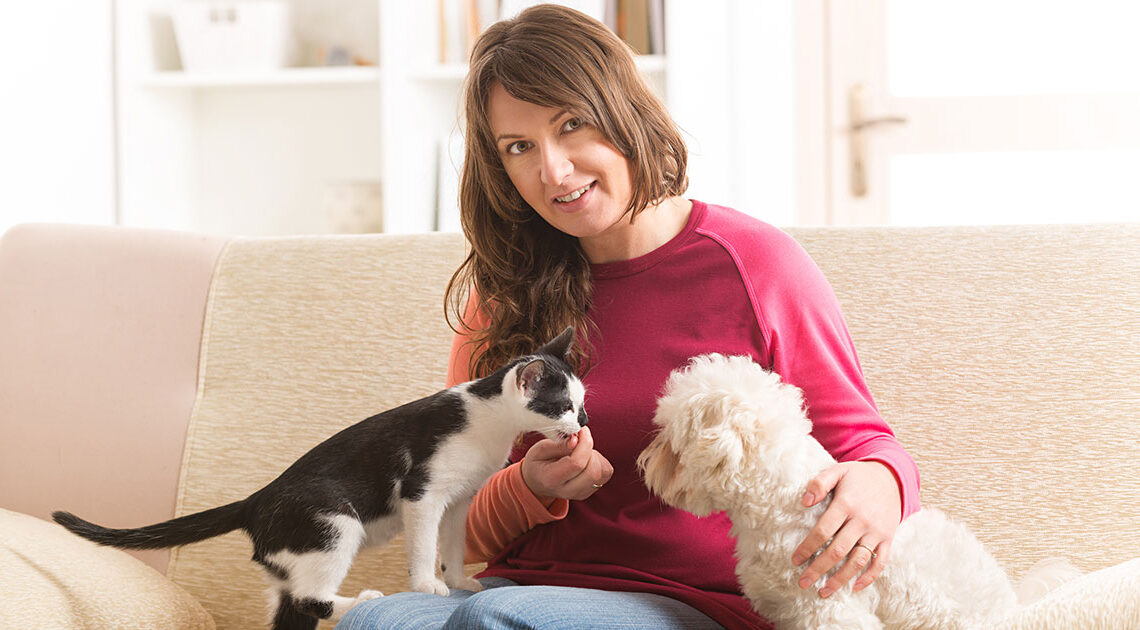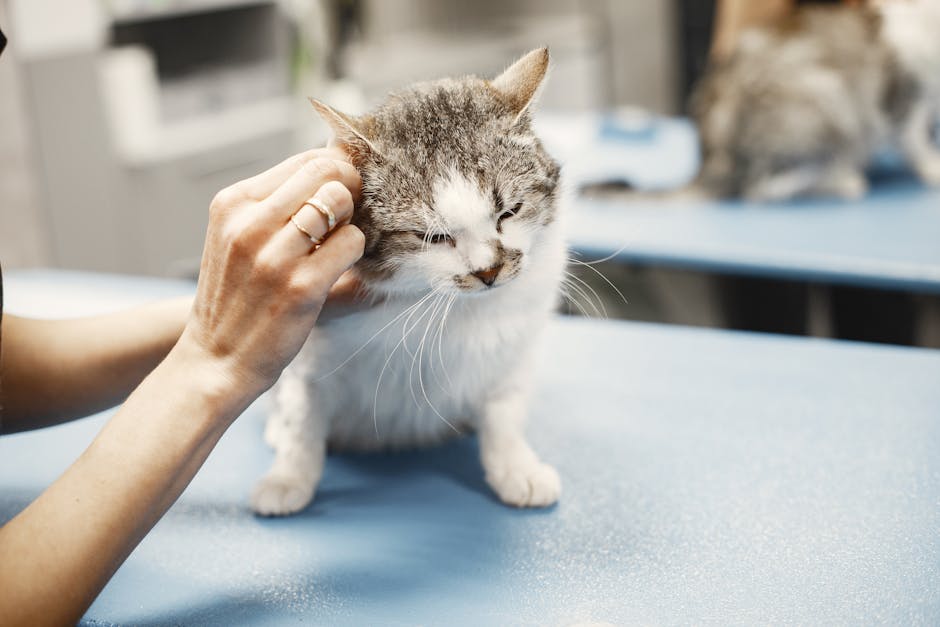How to Introduce Pets to New Environments: A Guide for Pet Owners

Introducing pets to new environments can be a challenging yet essential task for pet owners. Whether you’re moving to a new home, traveling with your pet, or simply introducing them to new spaces, how you manage the transition can greatly impact your pet’s emotional and behavioral well-being. Pets are creatures of habit, and changes in their surroundings can cause stress, anxiety, and confusion. However, with the right approach, you can help your pet adapt smoothly to new environments and ensure that they feel safe and comfortable.
In this article, we’ll explore effective strategies and tips for introducing pets—whether dogs, cats, or even smaller animals—to new environments while minimizing stress and fostering a positive experience.
1. Prepare Your Pet Before the Move
The key to a smooth transition starts well before you actually introduce your pet to the new environment. Pets thrive on routine, and abrupt changes can be overwhelming. Here are some steps to help prepare your pet for the change:
– Maintain Routine
As much as possible, try to maintain your pet’s usual routine during the lead-up to the move. Keep feeding times, walks, play sessions, and bedtime consistent. Routine helps to reassure your pet and provide a sense of normalcy.
– Desensitize Your Pet to New Spaces
If possible, take your pet to visit the new environment before the move. For example, if you’re moving to a new home, bring your dog for short visits or walk your cat around the new house. If you’re traveling, take them for car rides or trips to places they’ll be visiting. Gradually exposing your pet to new environments helps them get used to the changes without the full stress of an abrupt shift.
– Pack Gradually
Start packing your belongings in advance so that your pet doesn’t associate the packing process with chaos. As you pack, allow your pet to explore boxes and suitcases to minimize anxiety when the actual move happens.
2. During the Move: Keep Your Pet Comfortable
On the day of the move, pets may be anxious about the physical changes in their environment. Here’s how to make the process less stressful:
– Secure Your Pet in a Safe Space
During the actual move, pets should be kept in a quiet, secure area, away from the hustle and bustle. This reduces the chances of them becoming overwhelmed or escaping. For dogs, this could mean placing them in a crate or room with their favorite bed and toys. Cats are best kept in a quiet, familiar room with food, water, and a litter box.
– Keep Essentials Accessible
Pack a bag for your pet with all the essentials they’ll need during the move, including food, water, medications, bedding, and toys. Having familiar items nearby can help reduce their anxiety.
– Travel Comfortably
When traveling, whether by car, plane, or other means, make sure your pet’s travel experience is as smooth as possible. For dogs, this means using a travel crate or seat belt harness. For cats, ensure they have a secure carrier that is well-ventilated and large enough for them to move around comfortably. Always make regular stops to offer water and bathroom breaks for pets traveling by car.
3. Arriving at the New Environment: Take It Slow
Once you arrive at the new environment, be mindful of your pet’s emotions and behaviors. Sudden changes can be disorienting, and pets often need time to adjust. Here are some steps to take once you’ve arrived:
– Start with a Safe Space
Create a dedicated space in the new environment where your pet can retreat to and feel safe. Set up their bed, food and water bowls, toys, and any other comforting items they are familiar with. Whether it’s a new room in a house or a designated area in an apartment, having a consistent spot where they can relax will help them adjust more easily.
– Give Your Pet Time to Explore
Once your pet has settled into their safe space, allow them to explore the new environment at their own pace. Don’t rush them into unfamiliar rooms or areas. Gradually encourage them to explore different parts of the house or apartment, providing positive reinforcement with treats or praise.
– Keep Familiar Scents Around
Pets rely heavily on scent to feel comfortable in their environment. To help them settle in, keep familiar scents around them. This can include using their bed, blankets, or favorite toys that carry their scent. Scents help reassure pets that the new space is safe.
4. Monitor Your Pet’s Behavior and Emotions
After the move or transition, it’s important to observe your pet’s behavior closely. Changes in their environment can cause stress, which may manifest in different ways.
– Signs of Stress in Dogs and Cats
Watch for signs that your pet is feeling stressed or anxious. These may include:
- Excessive barking or meowing
- Hiding or avoiding interaction
- Decreased appetite or changes in eating habits
- Excessive grooming (in cats)
- Vomiting or diarrhea
- Destructive behavior (chewing, scratching)
If you notice these signs, be patient and give your pet time to adjust. Most pets will calm down within a few days, but if the symptoms persist, consider consulting a veterinarian or animal behaviorist.
– Establish New Routines
Maintaining a consistent routine helps pets feel more secure. Try to replicate the same schedule of feeding, walks, playtime, and bedtime as before the move. Routine helps provide structure and stability for your pet in an unfamiliar environment.
– Positive Reinforcement
Encourage positive behavior with treats and praise. For example, reward your dog when they explore new rooms or allow you to crate them without fuss. Cats can also benefit from treats when they’re comfortable with exploring new spaces or interacting with their new surroundings.
5. Introduce Other Animals Gradually
If you have multiple pets or are introducing a new pet to your home, the process should be done slowly and carefully. Pets, especially cats and dogs, can be territorial and may need time to adjust to a new animal in their space.
– Gradual Introductions
Start by keeping the pets in separate areas of the home to get them used to each other’s scent. Gradually introduce them to each other in neutral areas, such as the backyard or hallway, where neither pet feels territorial. Keep both animals on a leash or in a crate during the initial meetings to prevent aggression.
– Supervise Interactions
Always supervise interactions between pets during the introduction phase. If any signs of aggression or fear arise, separate the animals and try again after a break. Take things slowly, and don’t rush the process.
6. Be Patient and Consistent
Patience is key when introducing pets to a new environment. It can take time—anywhere from a few days to several weeks—for pets to fully acclimate to new surroundings. While some pets adjust quickly, others may need more time to feel comfortable.
Consistency in routines, positive reinforcement, and gradual introductions will go a long way in helping your pet adapt. The more patient and supportive you are, the more your pet will trust you and their new environment.
Conclusion
Introducing your pet to a new environment doesn’t have to be a stressful experience. By preparing in advance, maintaining routines, and taking things slow, you can help your pet feel safe and comfortable during the transition. Remember, each pet is different, and it may take time for them to adjust. With patience, care, and attention, your pet will thrive in their new surroundings and enjoy a smooth transition to their new home.


